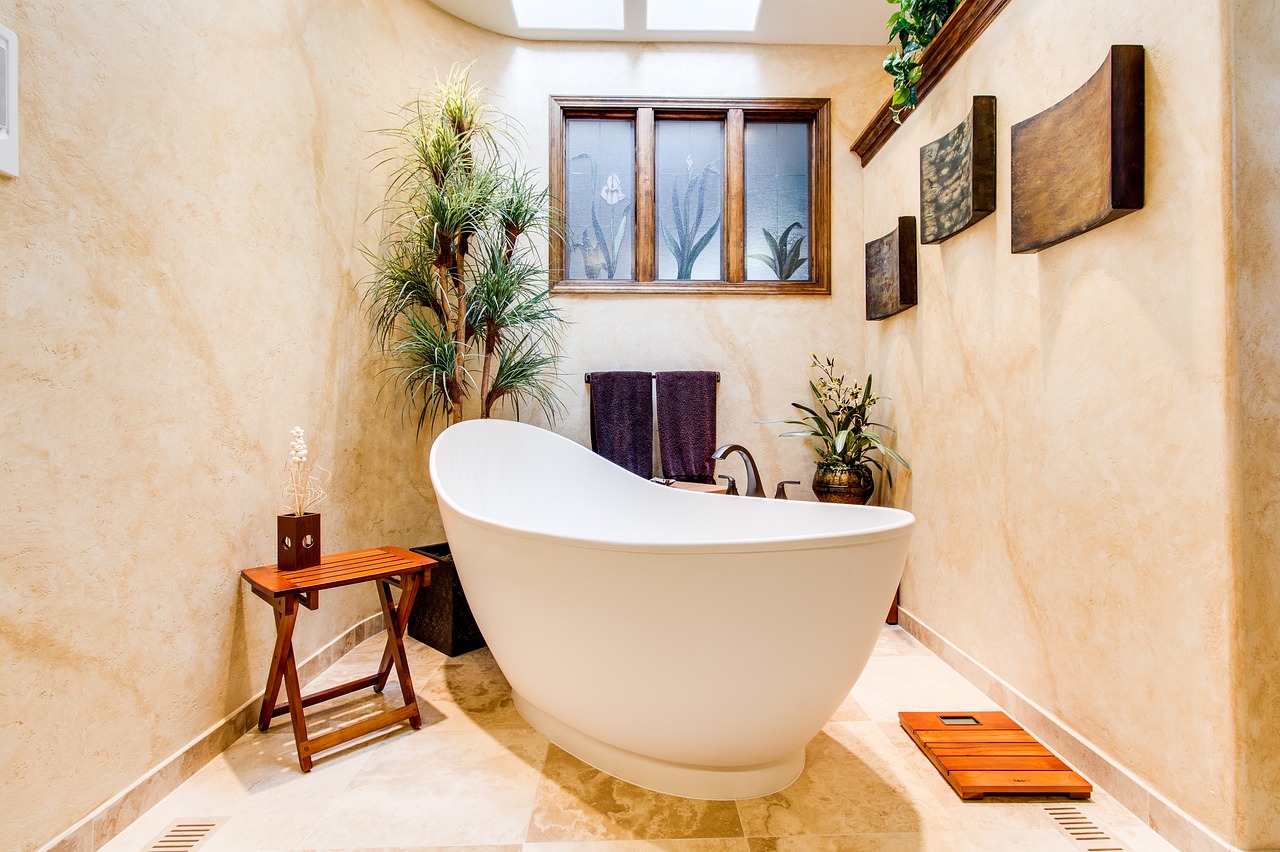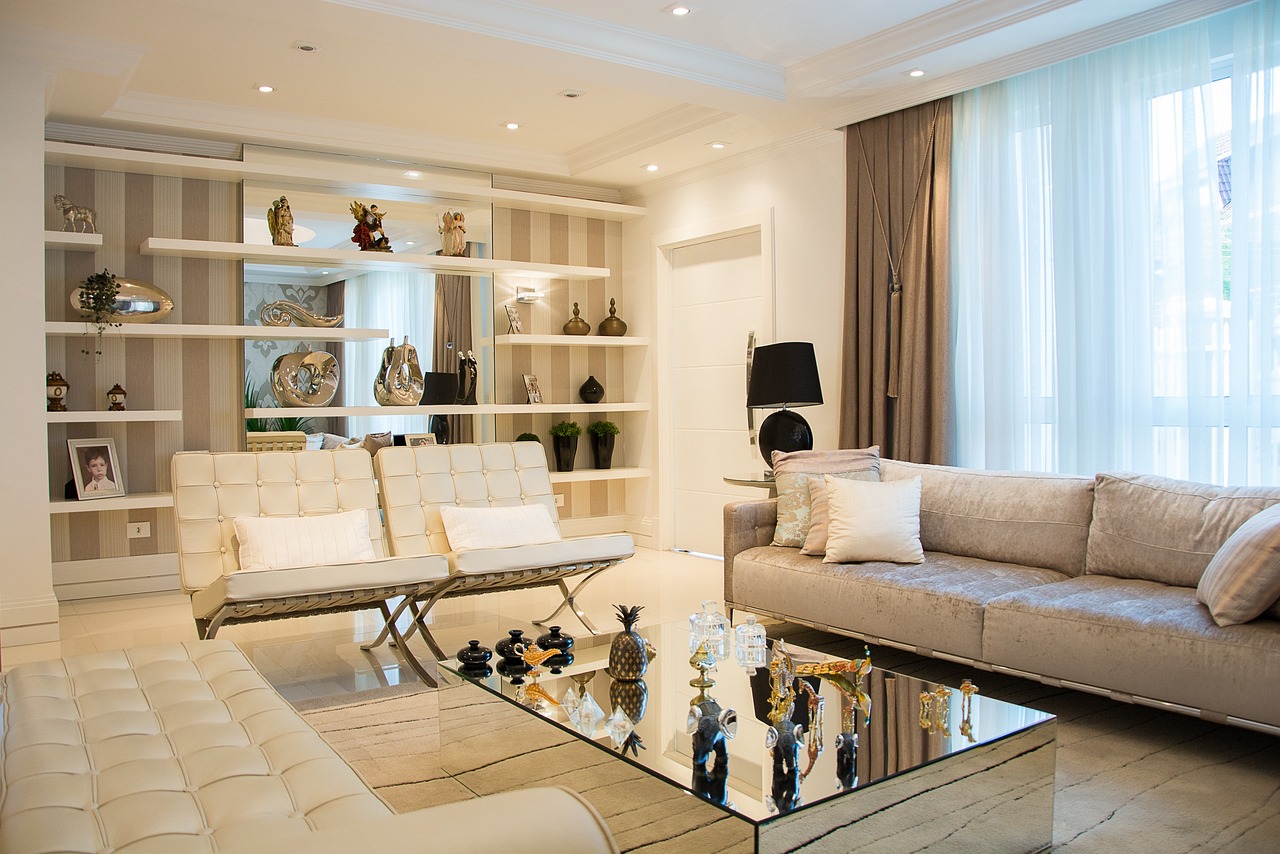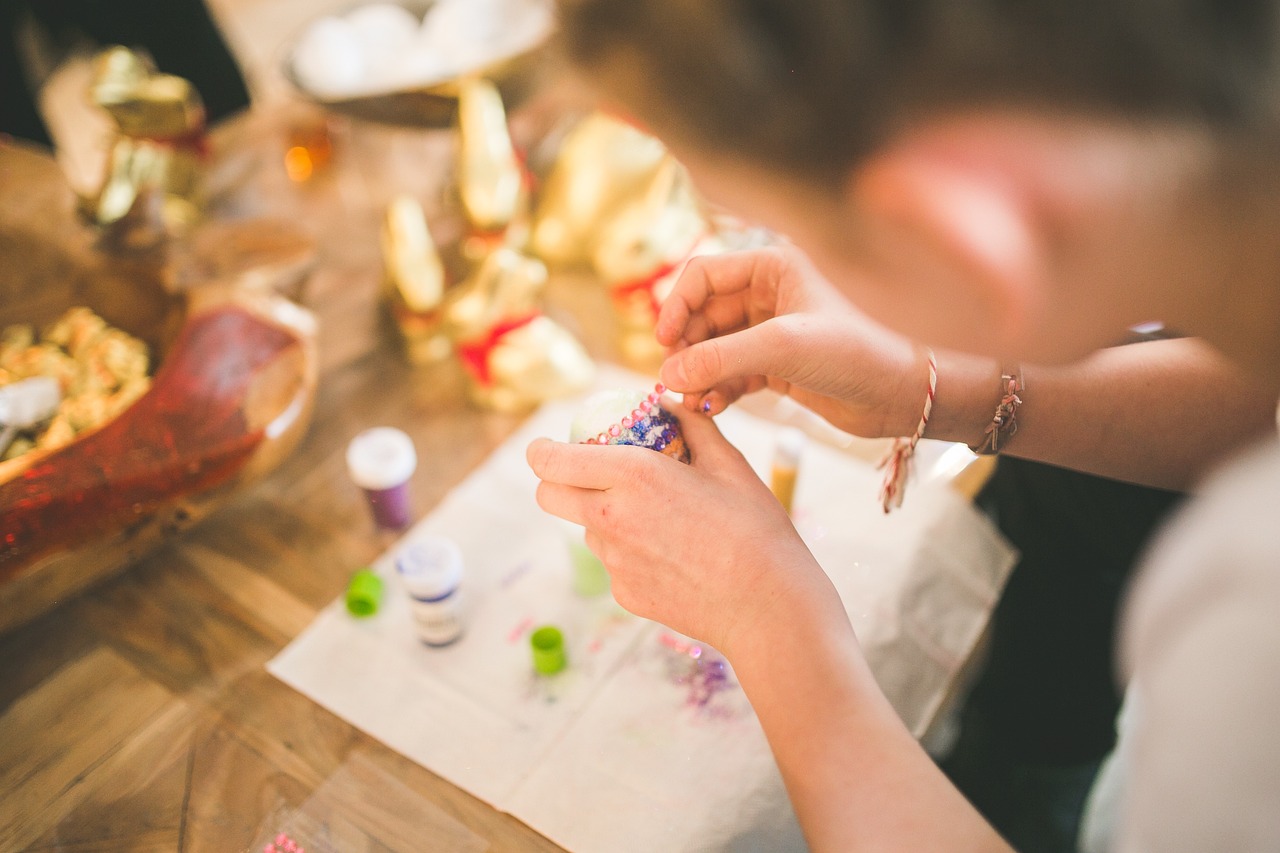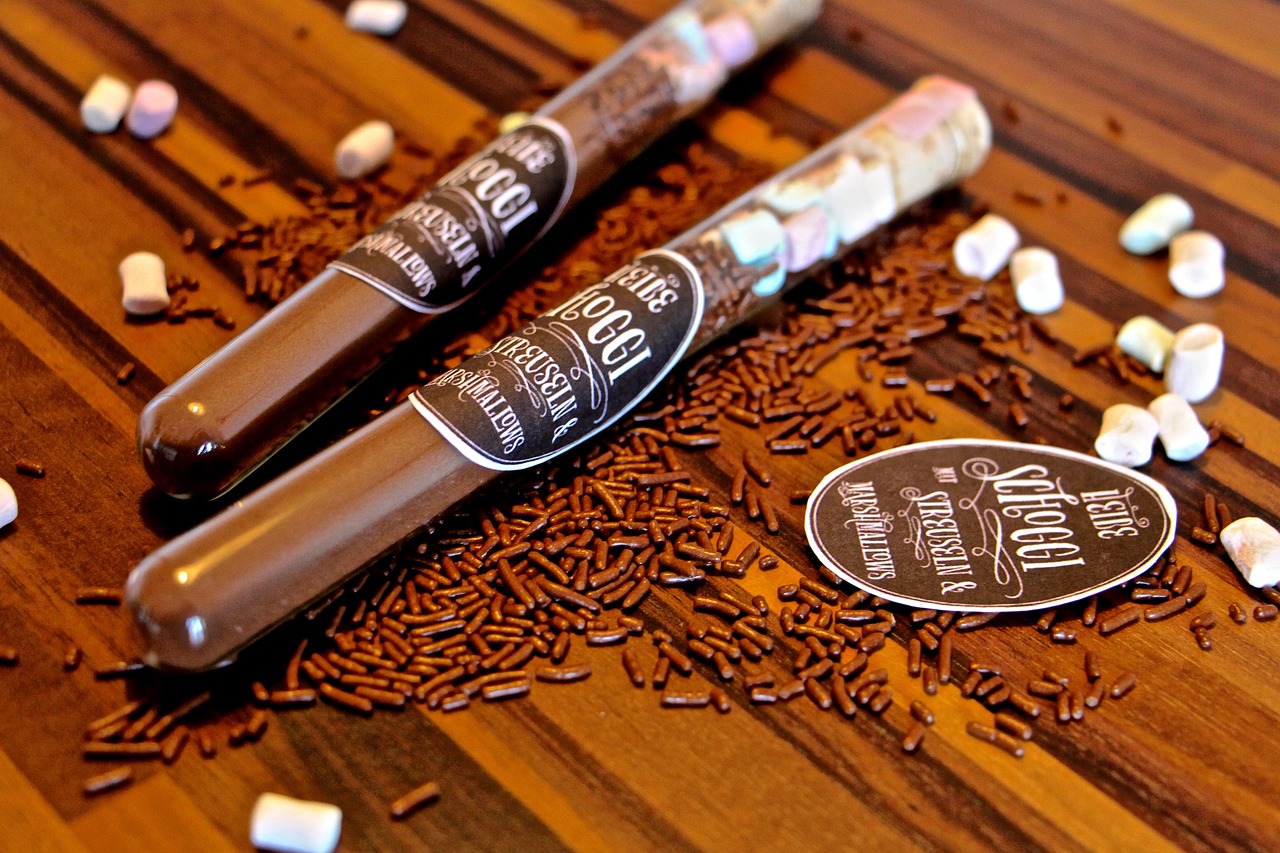Fast and Easy DIY Decor Projects for Busy Homeowners
Are you a busy homeowner looking to inject some fresh vibes into your living space without spending hours on Pinterest or scouring the internet for complicated projects? Well, you’re in the right place! This article dives into quick and simple DIY decor projects that will transform your home into a cozy retreat, all while fitting seamlessly into your hectic schedule. Imagine being able to revamp your surroundings with minimal time and effort—sounds dreamy, right? Let’s explore how you can easily refresh your spaces with a few clever ideas!
Wall art is like the icing on the cake for your home decor. It can take a bland wall and turn it into a stunning focal point in no time. You don’t need to be an artist or spend a fortune on expensive pieces; instead, consider creating your own unique wall art using materials you likely already have at home. For instance, why not frame some of your favorite photos or create a gallery wall with mismatched frames? This can be an exciting weekend project that not only brightens your walls but also showcases your personality. Additionally, using items like fabric scraps or even old maps can yield stunning results. The best part? You can change them out as your tastes evolve!
Have you ever looked at your old furniture and thought, “This could use a little love”? Upcycling is a fantastic way to breathe new life into tired pieces without breaking the bank. With just a can of paint, some fabric, and a sprinkle of creativity, you can dramatically change the look of your living space. Think of your old furniture as a blank canvas waiting for your artistic touch. For example, a simple coat of paint can transform a drab dresser into a statement piece. It’s all about seeing the potential in what you already have!
Old chairs can often be the most overlooked items in our homes. However, with a bit of effort, you can turn them into stunning focal points. Start by considering a few methods for updating them:
- Painting: A fresh coat of paint can work wonders. Whether you opt for a bold color or a soft pastel, the choice is yours!
- Reupholstering: Changing the fabric can completely alter the chair's vibe. Choose something that complements your existing decor.
- Adding Decorative Touches: Think about adding cushions, stencils, or even new hardware to make your chairs stand out.
With these techniques, your old chairs can become unique pieces that fit your style and enhance your decor!
When it comes to painting your furniture, the possibilities are endless. You can experiment with various techniques to achieve different looks:
- Distressing: This technique gives your furniture a vintage feel. Simply sand down edges and corners to reveal the wood underneath.
- Stenciling: Use stencils to add intricate designs or patterns, adding a personal touch to your pieces.
These methods not only elevate your furniture projects but also allow you to customize the look of your pieces effortlessly!
When reupholstering chairs, selecting the right fabric is crucial. Consider factors such as durability, style, and ease of use. For high-traffic areas, opt for fabrics that can withstand wear and tear, while still looking fabulous. Patterns can add visual interest, but don’t shy away from solid colors if you want a more classic look. Remember, your choices should reflect your personal style while being practical for your lifestyle!
Clutter can quickly take over a home, making it feel chaotic. However, with innovative and attractive storage solutions, you can declutter while adding a decorative touch. Think outside the box! Use decorative baskets to store blankets, or repurpose an old ladder as a bookshelf. These solutions not only keep your space organized but also enhance its visual appeal. It’s about finding that perfect balance between functionality and aesthetics!
Centerpieces are the heart of any table setting, be it for a casual dinner or a festive gathering. You don’t need to spend a fortune on elaborate arrangements; instead, get creative with everyday items. Consider using natural elements like flowers, stones, and wood to create stunning focal points. A simple vase filled with seasonal blooms can brighten up your dining table, while a rustic wooden bowl filled with fruits can add a touch of warmth to your kitchen.
Incorporating natural elements into your centerpieces can create a fresh and inviting atmosphere. Use items like:
- Fresh flowers for a pop of color.
- Stones or pebbles for texture.
- Wooden accents for warmth.
These elements not only look beautiful but also connect your home with nature, making it feel more serene.
One of the best parts of DIY decor is the ability to switch things up for different seasons and holidays. Consider creating interchangeable centerpieces that can be easily adapted. For instance, swap out flowers for autumn leaves in the fall or add festive ornaments during the winter holidays. This approach keeps your decor relevant and engaging throughout the year, ensuring your home always feels fresh and inviting!
Q: How much time should I set aside for these DIY projects?
A: Most of these projects can be completed in a few hours or over a weekend, making them perfect for busy homeowners!
Q: Do I need special skills to attempt these projects?
A: Not at all! These projects are designed to be simple and accessible, so anyone can get involved, regardless of skill level.
Q: Where can I find materials for these projects?
A: You can often find materials around your home or at local thrift stores. Upcycling is all about creativity!
So, are you ready to roll up your sleeves and dive into these fun DIY projects? Your home is your canvas—let's make it a masterpiece!

Quick Wall Art Ideas
Are you tired of staring at blank walls that seem to suck the life out of your space? If you’re a busy homeowner, finding the time to shop for art or spend hours creating it can feel impossible. But fear not! You can easily brighten up your home with some quick and creative wall art ideas that require minimal time and effort. Let’s dive into some projects that not only enhance your decor but also allow you to express your personality.
One of the simplest ways to create stunning wall art is by using materials you likely already have at home. For instance, consider making a gallery wall using family photos, postcards, or even your children's artwork. It’s like turning your hallway into a mini art gallery! Just gather a collection of frames in different sizes, arrange them on the floor first to find a layout you love, and then hang them up. This project is not only quick but also deeply personal, making it a perfect weekend endeavor.
If you’re looking for something a bit more hands-on, you might enjoy creating your own canvas art. All you need is a blank canvas, some paint, and a few brushes. You don’t have to be a Picasso to make something beautiful! Try abstract designs by splattering paint or using sponges to create texture. The beauty of this project is that each piece will be uniquely yours, and you can customize the colors to match your existing decor. Plus, it’s a fantastic way to unwind after a long week!
DIY Wall Hangings can also add a touch of warmth to your home. You can easily create a macramé wall hanging using some cord and a few basic knots. There are plenty of online tutorials that can guide you through the process step-by-step. Not only does this project add a bohemian flair to your space, but it also gives you a chance to practice a new skill. Hang it above your bed or in your living room for a cozy touch.
For those who prefer a more structured look, consider using framed fabric as wall art. Choose a fabric that complements your color scheme, cut it to size, and stretch it over a canvas or frame. This method is especially effective with bold patterns or textures, providing a chic and polished look without the need for painting. You can even change the fabric with the seasons for a fresh feel throughout the year!
Lastly, if you’re feeling particularly crafty, why not try your hand at wall decals? These are perfect for renters or anyone who wants to avoid the hassle of painting. You can find a plethora of designs online, from inspirational quotes to nature scenes. Simply peel and stick them onto your wall, and voilà! You have an instant transformation without any commitment. Plus, they’re removable, making it easy to switch things up whenever you want.
In summary, refreshing your home with quick wall art projects is both fun and rewarding. Whether you opt for a gallery wall, DIY canvas art, macramé hangings, framed fabric, or wall decals, each project allows you to inject your personality into your space. So grab your supplies and get started on a weekend of creativity!
Q: How long do these projects typically take?
A: Most of these wall art projects can be completed in a few hours, making them perfect for a weekend activity.
Q: Do I need to be an artist to create these art pieces?
A: Absolutely not! These projects are designed for everyone, regardless of skill level. The goal is to have fun and express yourself!
Q: Where can I find materials for these projects?
A: You can find materials at local craft stores, or even use items you already have at home. Check your closets for old frames, fabric, or craft supplies!

Budget-Friendly Furniture Upcycling
Are you staring at that old piece of furniture, wondering if it’s worth keeping or if it’s time to say goodbye? Well, let me tell you, it’s time to breathe new life into it! Furniture upcycling is not just an eco-friendly option; it’s a fantastic way to express your creativity and save some bucks while doing it. Imagine transforming a worn-out chair or a tired-looking table into a stunning centerpiece for your home with just a little paint, fabric, and a sprinkle of imagination. Sounds exciting, right?
The beauty of upcycling is that it allows you to customize your furniture to fit your personal style. You don’t need to be a DIY expert; even a novice can achieve great results with the right approach. First, you’ll want to assess what you have. Look for pieces that have good bones but may need a little love. A coat of paint can work wonders, and reupholstering can turn something drab into fab!
To get you started, here are some budget-friendly materials and techniques that can make your upcycling journey enjoyable:
- Paint: A fresh coat can completely change the vibe of a piece. Chalk paint, for instance, is a popular choice because it requires minimal prep and dries quickly.
- Fabric: For reupholstering, consider thrift store finds or remnants from fabric stores. Look for durable options that suit your decor style.
- Hardware: Changing knobs and handles can add a unique touch to your furniture. Explore vintage shops or online marketplaces for unique options.
Now, let’s dive deeper into two specific projects that showcase the magic of furniture upcycling: transforming old chairs and refreshing tables.
Old chairs can often be the unsung heroes of your home. With a little creativity, they can become statement pieces. Start by choosing a chair that has a solid structure but perhaps looks a bit outdated. First, consider painting it. You can opt for a bold color to make it pop or a soft pastel for a more subtle look. Don't forget to experiment with techniques like distressing or stenciling to add character.
Next, let’s talk about reupholstering. This process can feel daunting, but it’s quite straightforward. Choose a fabric that complements your existing decor. If you’re feeling adventurous, mix patterns or textures! Remember, the goal is to create something unique that reflects your personality.
When it comes to painting, there are several techniques you can explore. Here’s a quick rundown:
| Technique | Description |
|---|---|
| Distressing | Gives a vintage look by sanding down edges and corners. |
| Stenciling | Adds patterns or designs using stencils and a contrasting paint color. |
| Ombre | Creates a gradient effect by blending colors from light to dark. |
These techniques can elevate your furniture projects and make them truly one-of-a-kind.
Now, let’s discuss how to select the right fabric for your reupholstering project. Consider the following:
- Durability: If the chair will see a lot of use, opt for fabrics like canvas or denim.
- Style: Choose colors and patterns that resonate with your home’s aesthetic.
- Ease of Use: Some fabrics are easier to work with than others; starting with something forgiving can boost your confidence.
Remember, the right fabric can turn an ordinary chair into a stunning focal point in your room.
In conclusion, budget-friendly furniture upcycling is not just about saving money; it’s about creating something that tells a story. With just a little time and effort, you can transform your home into a space that reflects your personality and style. So, roll up your sleeves, gather your materials, and let your creativity shine!
Q: Is furniture upcycling difficult?
A: Not at all! With some basic tools and a little patience, anyone can upcycle furniture. Start with simple projects to build your confidence.
Q: How do I choose the right paint for my furniture?
A: Look for paints specifically designed for furniture. Chalk paint is a popular choice due to its ease of use and minimal prep work.
Q: Can I upcycle furniture without spending a lot of money?
A: Absolutely! Thrift stores, garage sales, and online marketplaces are great places to find inexpensive furniture that just needs a little love.

Transforming Old Chairs
Are you staring at that old chair in the corner of your room, wondering how it became a mere shadow of its former self? Don’t worry; you’re not alone! Many homeowners have chairs that have seen better days, but the good news is that transforming them into stunning focal points is easier than you think. With just a bit of creativity, some basic tools, and a splash of color, you can breathe new life into those tired pieces.
First off, let’s talk about painting. A fresh coat of paint can completely alter the appearance of your chair. Whether you prefer a sleek modern look or a rustic charm, the right color can do wonders. Consider using chalk paint for a matte finish that’s both chic and easy to work with. If you're feeling adventurous, you might even want to try out some distressing techniques to give your chair a vintage vibe. Just imagine how a bold turquoise or a soft pastel could brighten up your space!
Next, let’s dive into the world of reupholstering. This might sound intimidating, but it’s quite manageable, especially with a little guidance. Start by selecting a fabric that complements your decor. Think about durability and ease of cleaning, especially if you have pets or kids. For instance, a durable canvas or a stain-resistant polyester can be great choices. Once you’ve got your fabric, you can remove the old upholstery and replace it with your new selection. This process not only enhances the look of the chair but also adds comfort.
Now, let’s not forget about the decorative touches that can make your chair truly unique. Adding some throw pillows or a cozy blanket can instantly elevate the aesthetic. You might also want to consider adding some trim or embellishments, like tassels or buttons, to give it that extra flair. The beauty of DIY projects is that you can let your personality shine through!
To wrap it up, transforming old chairs is not just about aesthetics; it’s about creating pieces that reflect your style and make your home feel more inviting. So, gather your supplies, put on some music, and get ready to unleash your inner designer. Your old chair is waiting for its makeover, and you’re just the person to give it a second chance!
- How do I choose the right paint for my chair? Look for paint specifically designed for furniture, such as chalk paint or furniture spray paint, which offers durability and a beautiful finish.
- Is reupholstering difficult? It can be a bit challenging, but with the right tools and tutorials, it’s definitely doable! Start with simple projects to build your confidence.
- What fabrics are best for reupholstering? Choose fabrics that are durable and easy to clean, such as canvas, microfiber, or synthetic blends.
- Can I paint over fabric? Yes, there are special fabric paints available that allow you to paint over upholstery, but make sure to follow the manufacturer’s instructions for the best results.

Painting Techniques
When it comes to giving your furniture a fresh new look, can make all the difference. Whether you're revamping an old chair or sprucing up a tired dresser, the right technique can transform your piece from drab to fab in no time. One of the most popular methods is distressing, which involves intentionally creating a worn look to add character to your furniture. This technique is perfect for those who love a rustic or vintage aesthetic.
Another exciting option is stenciling. With stencils, you can add intricate designs or patterns to your furniture, making it a true reflection of your personality. Imagine a simple white table adorned with a beautiful floral stencil in soft pastels. It’s like adding a piece of art to your decor! Plus, stenciling is relatively easy to do and can be a fun project to tackle on a weekend.
If you're feeling adventurous, you can try the ombre technique, where you blend two or more colors to create a gradient effect. This technique adds depth and dimension to your furniture, making it a real conversation starter. Just picture a chair that transitions from a deep navy at the bottom to a soft sky blue at the top—stunning, right?
For those who prefer a more classic approach, solid color painting is always a safe bet. Choosing a bold color can instantly modernize your furniture and make it a focal point in any room. When selecting your paint, remember to consider the finish. Matte finishes give a more subdued look, while glossy finishes can add a touch of elegance and are easier to clean.
Here’s a quick comparison of some popular painting techniques:
| Technique | Description | Best For |
|---|---|---|
| Distressing | Creating a worn look using sandpaper or special tools. | Rustic or vintage styles. |
| Stenciling | Applying designs with stencils for decorative patterns. | Personalized touches. |
| Ombre | Blending colors for a gradient effect. | Unique, modern aesthetics. |
| Solid Color | Applying a single color for a bold, clean look. | Modern, classic styles. |
Before you start painting, don’t forget to prep your furniture! Cleaning, sanding, and priming are essential steps that ensure your paint adheres well and lasts longer. Think of it as laying a solid foundation before building a house; it’s crucial for achieving a beautiful finish. And remember, patience is key! Allow each layer of paint to dry completely before applying the next one, and you'll be rewarded with a stunning transformation.
In conclusion, mastering these painting techniques can empower you to breathe new life into your old furniture. So roll up your sleeves, grab your brushes, and let your creativity flow! Your home deserves to shine with pieces that reflect your unique style and personality.
Q: What type of paint should I use for furniture?
A: It's best to use furniture paint or chalk paint, as they provide good coverage and durability. Make sure to choose a finish that suits your style—matte, satin, or glossy.
Q: Do I need to sand my furniture before painting?
A: Yes, sanding helps the paint adhere better. It creates a rough surface for the paint to grip onto, ensuring a smoother finish.
Q: How can I protect my painted furniture?
A: Use a clear sealant or topcoat to protect your painted surface from scratches and stains. This will help maintain the beauty of your work for years to come.

Choosing Fabrics
When it comes to reupholstering chairs, selecting the right fabric is crucial. Not only does it affect the overall aesthetic of your furniture, but it also impacts its durability and functionality. Imagine your favorite chair, beautifully upholstered in a vibrant fabric, only to have it wear out after a few months. That’s a nightmare for any homeowner! So, how do you choose wisely? Here are some key factors to consider:
First, think about the durability of the fabric. If you have kids or pets, you’ll want something that can withstand the wear and tear of everyday life. Fabrics like canvas, denim, and microfiber are excellent choices for high-traffic areas because they are not only durable but also easy to clean. On the other hand, if your chair is more for show than for use, you might opt for something more delicate like velvet or silk.
Next, consider the style of the fabric. This is where you can really let your personality shine! Do you prefer bold patterns or subtle textures? Floral prints might bring a touch of whimsy to your space, while geometric designs could add a modern flair. It’s all about what resonates with you and complements your existing decor. Remember, the fabric you choose should not only reflect your style but also harmonize with the colors and styles already present in your home.
Another essential factor is the ease of use. Some fabrics are more challenging to work with than others. For instance, slippery fabrics can be tough to cut and sew, while thicker materials might require a heavy-duty sewing machine. If you’re a DIY novice, opt for fabrics that are forgiving and manageable. A good rule of thumb is to start with cotton blends, which are generally easier to handle and come in a variety of colors and patterns.
Lastly, don't forget about the maintenance of your chosen fabric. Some materials require special cleaning methods or are prone to fading in sunlight. If you want your reupholstered chairs to look great for years to come, choose fabrics that are stain-resistant or can be easily cleaned. Many fabrics today come with protective coatings that make them more resilient against spills and stains, which can be a lifesaver in a busy household.
To summarize, here’s a quick table to help you remember the key points when choosing your upholstery fabric:
| Factor | Considerations |
|---|---|
| Durability | Look for strong fabrics like canvas or microfiber for high-traffic areas. |
| Style | Choose patterns and colors that reflect your personal style and complement your decor. |
| Ease of Use | Opt for manageable fabrics like cotton blends if you're new to reupholstering. |
| Maintenance | Select fabrics that are stain-resistant and easy to clean for longevity. |
By keeping these factors in mind, you'll be well on your way to choosing the perfect fabric that not only enhances the beauty of your chairs but also fits seamlessly into your busy lifestyle. So, roll up your sleeves and get ready to transform your old furniture into stunning, functional pieces that you can be proud of!
Q: What type of fabric is best for a chair that will be used frequently?
A: Durable fabrics such as canvas or microfiber are ideal for frequently used chairs, as they can withstand wear and tear.
Q: How can I clean upholstery fabric?
A: Always check the care label on the fabric. Most can be spot cleaned with mild soap and water, while others may require professional cleaning.
Q: Can I mix different fabric patterns on my chairs?
A: Absolutely! Mixing patterns can add visual interest. Just ensure they share a common color palette to create a cohesive look.

Creative Storage Solutions
Are you tired of clutter taking over your home? Do you feel like you’re constantly battling against piles of stuff that just don’t seem to have a place? Well, fear not! Creative storage solutions can not only help you regain control over your space but also add a touch of style to your decor. Imagine transforming mundane storage into eye-catching features that enhance your home’s aesthetic. Let’s dive into some innovative ideas that are both practical and visually appealing!
One fantastic way to tackle storage is by repurposing items you already own. For example, old wooden crates can be stacked to create a rustic bookshelf or used as a unique nightstand. You can even paint them in vibrant colors to match your decor, instantly adding character to your room. Similarly, glass jars can be utilized to store everything from kitchen staples to craft supplies, while also serving as decorative elements on your shelves.
Another great approach is to utilize vertical space. When floor space is limited, think upwards! Installing floating shelves is an excellent way to display books, plants, or decorative items while keeping your surfaces clear. Just imagine a wall adorned with your favorite novels and quirky trinkets, all neatly organized and easily accessible. You could even create a mini gallery by mixing shelves with framed photos or artwork, turning your wall into a personal masterpiece!
Don't forget about multifunctional furniture! Pieces like ottomans or benches with hidden storage can be lifesavers in small spaces. They allow you to hide away blankets, toys, or magazines while providing extra seating. It's like having your cake and eating it too! Plus, they often come in stylish designs that can complement your decor.
For a more tailored solution, consider investing in decorative baskets. These can be placed in living rooms, bedrooms, or even bathrooms to gather miscellaneous items like remote controls, magazines, or toiletries. Not only do they keep things organized, but they also add texture and warmth to your space. You can choose from a variety of materials, such as wicker, fabric, or metal, to match your style!
Lastly, let’s talk about the importance of labeling. It might sound simple, but labeling bins and boxes can make a world of difference. It’s like giving your items a home of their own! When everything has a designated spot, you’ll find it easier to maintain order. Plus, it adds a fun, personalized touch to your storage solutions. You can use chalkboard labels for a chic look or colorful tags for a pop of fun!
In summary, creative storage solutions can transform your home from chaotic to calm, all while reflecting your personal style. By repurposing items, utilizing vertical space, opting for multifunctional furniture, and incorporating decorative baskets, you can create an organized and inviting atmosphere. Remember, the key is to think outside the box and have fun with it!
- What are some quick storage solutions for small spaces? Consider using under-bed storage boxes, vertical shelving, or multifunctional furniture like ottomans with storage.
- How can I make my storage solutions more decorative? Use decorative boxes, stylish baskets, and colorful labels to enhance the aesthetic appeal of your storage.
- Are there DIY ideas for creating storage? Absolutely! You can repurpose old furniture, use crates, or even create your own shelving units with reclaimed wood.
- How do I choose the right storage solution for my home? Assess the items you need to store, consider your space limitations, and choose solutions that complement your existing decor.

Simple Centerpiece Projects
Centerpieces can be the unsung heroes of home decor, effortlessly tying a room together and providing a focal point that draws the eye. Whether you're hosting a dinner party or enjoying a quiet evening at home, a well-crafted centerpiece can elevate the atmosphere. The best part? You don't need to be a DIY expert or spend a fortune to create stunning centerpieces. With just a few simple materials and a sprinkle of creativity, you can transform everyday items into beautiful displays that reflect your personal style.
One of the simplest ways to craft a centerpiece is by using natural elements. Imagine a rustic wooden bowl filled with fresh fruits or a mason jar brimming with wildflowers. Not only do these items add a touch of nature to your space, but they also bring in vibrant colors and textures that can brighten up any table. You can easily switch these out with the seasons, using pinecones and evergreen branches in the winter or seashells and sand in the summer. The beauty of natural elements is their versatility; they can be dressed up or down depending on the occasion.
Another fun approach is to repurpose items you already have at home. Old books stacked on a table can create an intriguing base for a decorative piece, while vintage teacups can be filled with candles or small plants. Using everyday items not only saves money but also adds a personal touch to your decor. Consider creating a centerpiece that tells a story, perhaps featuring travel souvenirs or family heirlooms. This not only makes for a great conversation starter but also gives your space a unique character.
If you're looking for a quick and easy project, consider making a seasonal centerpiece. For instance, during the fall, you can fill a glass vase with colorful leaves, mini pumpkins, and acorns. In the spring, swap those out for pastel-colored eggs, fresh flowers, and greenery. This simple act of changing your centerpiece can keep your decor fresh and engaging, allowing you to celebrate the changing seasons in your home. To help you visualize, here’s a quick table of ideas for seasonal centerpieces:
| Season | Centerpiece Ideas |
|---|---|
| Spring | Fresh flowers, pastel eggs, and greenery |
| Summer | Seashells, sand, and candles |
| Fall | Mini pumpkins, colorful leaves, and acorns |
| Winter | Pinecones, evergreen branches, and candles |
Don't forget about the power of lighting in your centerpiece projects. Incorporating candles or fairy lights can add warmth and a magical glow to your table setting. For instance, placing a few votive candles within a glass terrarium filled with pebbles and moss can create a cozy, inviting atmosphere. Alternatively, string lights woven through a centerpiece can add a whimsical touch, perfect for evening gatherings.
In conclusion, creating simple centerpieces doesn't have to be a daunting task. With a little imagination and a few materials, you can craft stunning displays that enhance your home’s aesthetic. Remember to play around with different elements and themes, and don’t be afraid to let your personality shine through. After all, your home should be a reflection of you!
What materials can I use for my centerpiece?
You can use a variety of materials including natural elements like flowers, fruits, and leaves, as well as everyday items like books, jars, and candles. The key is to be creative and use what you have!
How often should I change my centerpiece?
It's a good idea to change your centerpiece with the seasons or whenever you feel like refreshing your decor. This keeps your space dynamic and interesting.
Can I use artificial flowers or plants?
Absolutely! Artificial flowers and plants can be a great option, especially if you want a low-maintenance centerpiece that lasts longer.
How do I choose the right size for my centerpiece?
The size of your centerpiece should complement the table it’s on. For larger tables, a bigger centerpiece works well, while smaller tables benefit from more compact arrangements. Just ensure it doesn’t obstruct conversation!

Natural Elements
Incorporating into your home decor can create a warm and inviting atmosphere that feels both refreshing and grounded. Think about it: when you walk into a space filled with the beauty of nature, doesn't it instantly lift your spirits? Whether you're aiming for a rustic vibe or a modern touch, using items like flowers, stones, and wood can transform your home into a sanctuary. Let's dive into some creative ways to bring these natural elements into your centerpieces.
First off, consider using fresh flowers. They are not only vibrant but also bring life to any room. You don’t have to stick to traditional bouquets; try arranging wildflowers in a mason jar for a charming, laid-back look. Alternatively, if you want something that lasts longer, opt for dried flowers. They add a unique texture and can be styled in various ways, from minimalist to bohemian. Imagine a simple glass vase filled with dried lavender or eucalyptus—how calming would that be?
Next, let’s talk about stones and pebbles. These can be beautiful accents in your centerpieces. Try filling a shallow bowl with smooth stones or colorful pebbles, and then place a small candle in the center. Not only does it look stunning, but it also adds a touch of serenity to your space. You can even collect stones from your travels and use them as a personal touch that tells a story. Each stone can serve as a reminder of a cherished memory, making your decor not just beautiful but meaningful.
Wood is another fantastic element to incorporate. Whether it’s a rustic wooden tray or a slice of tree trunk as a base for your centerpiece, wood brings a natural warmth that is hard to replicate. You might even consider using driftwood for a coastal theme or reclaimed wood for a more farmhouse feel. The possibilities are endless! A simple centerpiece could consist of a few candles placed on a wooden slab, surrounded by greenery, creating a stunning focal point that draws the eye.
To take your natural decor to the next level, think about layering textures. Combining different elements—like a woven basket filled with moss and stones, topped with a few flowers—can create depth and interest. It’s all about creating a visual balance that feels intentional yet effortless. And remember, nature is all about variety, so don’t be afraid to mix and match different materials!
Lastly, consider the seasons when planning your natural decor. In spring, fresh blooms can take center stage, while autumn might call for pumpkins and gourds. By changing your centerpiece with the seasons, you keep your decor feeling fresh and relevant. It's like a breath of fresh air, ensuring your home reflects the beauty of nature throughout the year.
- How do I choose the right flowers for my centerpiece? Consider the season and your color scheme. Seasonal flowers are often more vibrant and last longer.
- Can I use artificial flowers instead of real ones? Absolutely! High-quality artificial flowers can look just as beautiful and require less maintenance.
- What are some easy ways to incorporate stones into my decor? You can use them in bowls, as accents in vases, or even as part of a terrarium for a unique touch.
- How often should I change my centerpieces? It depends on your preference! Seasonal changes or special occasions are great times to refresh your decor.

Seasonal Decor
Changing your decor with the seasons is like giving your home a fresh coat of paint—it's revitalizing and can completely alter the atmosphere! Imagine walking into your living room and feeling the warmth of autumn with rich oranges, deep reds, and golden yellows, or the cool, crisp vibes of winter with whites and blues. Seasonal decor doesn't have to be a daunting task; in fact, it can be a fun and creative outlet that keeps your space feeling new and inviting.
One of the easiest ways to incorporate seasonal decor is by using natural elements. For instance, in the fall, you can gather colorful leaves, pinecones, and even small pumpkins to create stunning centerpieces. In winter, why not bring in some evergreen branches, berries, and twinkling lights? These elements not only add a touch of nature but also create a cozy ambiance that makes your home feel like a warm hug during the colder months.
Another fantastic approach is to use color palettes that reflect the season. You can easily switch out throw pillows, blankets, and table runners to match the time of year. For spring, think pastel colors; for summer, vibrant hues. You can even create a simple table to help visualize these seasonal changes:
| Season | Color Palette | Decor Ideas |
|---|---|---|
| Spring | Pastels (pink, mint, lavender) | Floral arrangements, light tablecloths |
| Summer | Bright colors (yellow, blue, green) | Beach-themed decor, vibrant centerpieces |
| Autumn | Warm tones (orange, red, brown) | Harvest-themed decor, candle arrangements |
| Winter | Cool colors (white, silver, blue) | Snowflake decorations, cozy throws |
Don't forget about the holidays! Each season brings its own set of celebrations that can be reflected in your decor. For example, during Halloween, you can add spooky elements like cobwebs and pumpkins, while Christmas calls for twinkling lights and festive ornaments. You can even switch up your centerpiece to reflect these occasions, such as using a spooky black and orange theme for Halloween or a winter wonderland vibe for Christmas.
Lastly, think about how you can repurpose items you already have. For instance, a simple glass vase can be filled with seasonal fruits, flowers, or even ornaments, depending on the time of year. This not only saves you money but also allows you to get creative with what you have on hand. The beauty of seasonal decor is that it’s all about expressing yourself and making your home feel like a reflection of your personality and the changing world around you.
- How often should I change my seasonal decor? It's up to you! Many people change their decor with each season, but you can also do it for specific holidays or whenever you feel like a change.
- Do I need to spend a lot of money on seasonal decor? Not at all! You can create beautiful seasonal decor using items you already have, or by sourcing inexpensive materials from local stores or even nature.
- Can I mix and match seasonal decor? Yes! Mixing different elements can create a unique and personalized look that reflects your style.
Frequently Asked Questions
-
What are some quick wall art ideas for my home?
If you're looking to jazz up your walls without spending a fortune, consider creating your own wall art using materials you already have! Think about framing fabric, making a gallery wall with family photos, or even painting abstract designs on canvas. You can also use items like old maps or postcards to create a unique display that reflects your personality.
-
How can I upcycle old furniture on a budget?
Upcycling furniture doesn't have to break the bank! A can of paint can work wonders—opt for bold colors or trendy pastels to give your pieces a fresh look. You can also change the fabric on cushions or add new knobs to drawers to make a big impact with minimal effort. Check out thrift stores for inspiration and materials!
-
What are some easy ways to transform old chairs?
Transforming old chairs can be a fun weekend project! Start by giving them a good clean, then consider painting them in a color that complements your decor. Reupholstering is another great option—choose a fabric that suits your style, and don’t shy away from adding fun patterns or textures. Little touches, like adding decorative pillows or stenciling designs, can make a huge difference!
-
What painting techniques should I try for my furniture?
There are plenty of painting techniques to explore! Distressing gives a vintage look, while stenciling can add intricate designs. You might also want to try a sponge technique for a textured finish. Just remember to prep your furniture properly and use a good primer to ensure your paint adheres well!
-
How do I choose the right fabric for reupholstering?
When selecting fabric for reupholstering, consider durability and ease of cleaning. Look for fabrics labeled as upholstery-grade, as they are designed to withstand wear and tear. Think about your color scheme and choose something that complements your existing decor. Don't forget to test out swatches at home to see how they look in your space!
-
What are some creative storage solutions for my home?
Creative storage can declutter your space while adding style! Use decorative baskets for items like blankets or toys, and consider floating shelves to display books and decor. Repurposing old crates as side tables or storage can also add a rustic touch. Get inventive—storage can be functional and beautiful!
-
How can I create simple centerpieces for my dining table?
Creating centerpieces can be as easy as gathering items from around your home! Use a simple vase filled with fresh flowers, or arrange candles of varying heights for a cozy vibe. You can also incorporate seasonal elements like pinecones in winter or seashells in summer to keep things fresh and relevant. Just let your creativity flow!
-
What natural elements can I incorporate into my centerpieces?
Natural elements can bring a refreshing touch to your decor! Consider using fresh flowers, twigs, stones, or even fruits for a pop of color. Mixing different textures, like wood and glass, can create visual interest. The beauty of nature is that it’s always changing, so feel free to swap out elements as the seasons change!
-
How do I switch up my centerpieces for different seasons?
Switching up centerpieces for the seasons is super easy! For spring, think pastel colors and fresh blooms; in summer, incorporate bright fruits or seashells. As fall arrives, use pumpkins and earthy tones, and during winter, opt for evergreen branches or festive decorations. This keeps your decor lively and engaging all year round!



















